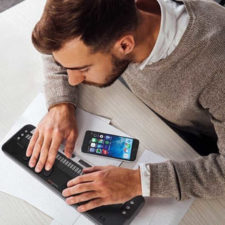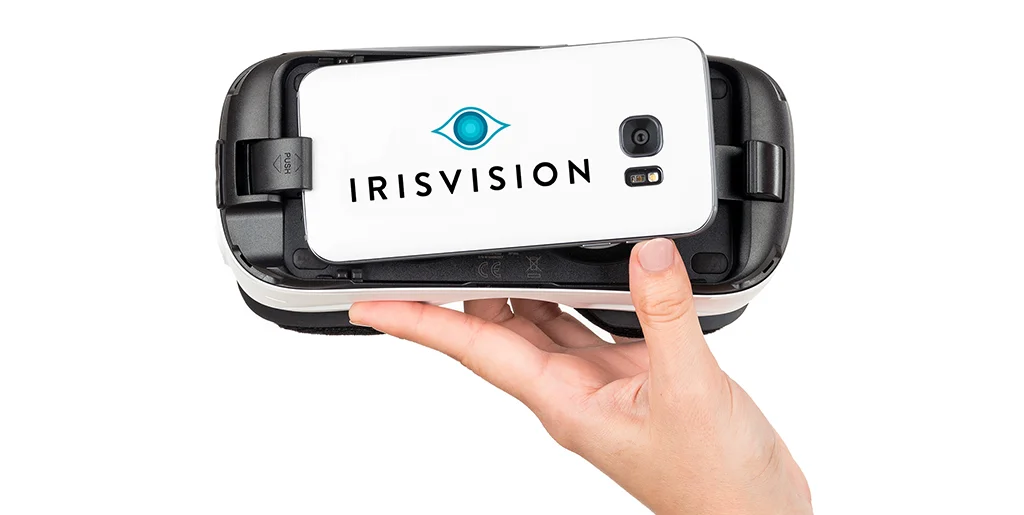Braille Displays and Notetakers: Key Tools for Learning and Work
Braille Displays and Notetakers: Key Tools for Learning and Work
Blog Article
Discover Innovative Devices Made for the Aesthetically Damaged
The development of innovative devices for the visually impaired stands for a substantial improvement in ease of access and self-reliance. Technologies such as smart glasses with AI abilities and mobile applications designed to provide auditory summaries are improving everyday experiences for users. Additionally, wearable tools that utilize haptic feedback boost ecological understanding, while modern-day Braille technologies offer new ways to involve with text. As these tools continue to evolve, their influence on the lives of those with aesthetic impairments elevates essential concerns regarding the future of inclusivity and autonomy in different elements of life. What exists ahead in this technological landscape?
Smart Glasses for Navigation

Smart glasses developed for navigating are revolutionizing the means aesthetically damaged people communicate with their atmosphere. These advanced tools make use of a combination of video camera innovation, artificial intelligence, and acoustic comments to provide real-time info about environments. By utilizing challenge detection systems, wise glasses can signal users to prospective dangers, making it possible for safer movement in both strange and familiar setups.
The assimilation of GPS innovation additionally improves navigation capacities, allowing customers to get acoustic instructions as they move. This hands-free approach not just cultivates freedom however additionally equips visually impaired people to browse metropolitan landscapes with enhanced self-confidence. Furthermore, numerous clever glasses are outfitted with functions that recognize landmarks and street signs, giving contextual information that boosts the customer experience.
Moreover, the advancement of these gadgets is continually advancing, with business working to improve the precision of object acknowledgment and increase the range of navigational features. As wise glasses end up being a lot more available and cost effective, they hold the prospective to considerably transform every day life for visually damaged customers. Eventually, these ingenious devices stand for an important action toward inclusivity, offering boosted movement and a greater sense of freedom for people browsing the world around them.

Mobile Apps for Daily Living
How can mobile applications improve the day-to-day lives of visually damaged individuals? Mobile apps are changing the means aesthetically impaired users browse their environments, manage day-to-day tasks, and access information. These applications provide vital assistance via different capabilities, promoting independence and boosting high quality of life.
A number of innovative mobile apps are developed particularly for daily living. As an example, apps like Be My Eyes link visually impaired individuals with sighted volunteers via video clip telephone calls, enabling them to obtain real-time help with jobs such as checking out labels or navigating unknown areas. Seeing AI, created by Microsoft, makes use of artificial knowledge to define environments, checked out message, and recognize items, successfully transforming a mobile phone right into an effective tool for day-to-day aid.
Additionally, navigating apps tailored for the visually impaired, such as Aira and BlindSquare, supply audio-based instructions and environmental info, enabling customers to traverse their surroundings safely and confidently. Beyond navigation and immediate aid, mobile applications likewise support company and task monitoring, with attributes that aid users set suggestions, create to-do lists, and track consultations. In summary, mobile applications serve as vital sources, empowering aesthetically impaired people to lead more independent and fulfilling lives.
Wearable Technologies for Help
Empowerment with modern technology is progressively evident in the world of wearable gadgets made to help visually impaired people. These cutting-edge devices incorporate perfectly right into day-to-day live, improving navigation and offering important comments to customers. Wise glasses outfitted with electronic cameras can acknowledge faces and read text aloud, permitting users to connect even more confidently in professional and social setups.
An additional notable improvement is the usage of haptic responses systems in wearable devices. These systems make use of resonances or various other responsive signals to share details concerning the customer's environment, such as challenges or modifications in terrain, enhancing movement and safety. Wearable modern technologies also include wristbands that connect to mobile phones, signaling customers to notices via subtle vibrations, therefore enhancing connectivity without dependence on aesthetic hints.
As these innovations remain to advance, they are not only boosting freedom for aesthetically impaired individuals yet also fostering a higher sense of addition in culture. By connecting the void between challenges encountered in day-to-day living and the possibility for autonomy, wearable modern technologies offer as critical devices in the pursuit for equal rights and empowerment for those with visual impairments.
Sound Description Devices
Sound summary devices play an important function in improving access for visually damaged people, supplying them with the ability to involve with aesthetic media. Braille displays and notetakers. These tools provide narrated descriptions of vital aesthetic aspects in movies, tv programs, and live performances, making certain that individuals can fully understand the context and emotions communicated through visuals
Audio summary can be integrated into various platforms, including streaming solutions, movie theater testings, and live theater. Several preferred streaming solutions currently include audio summary as an availability function, allowing audiences to choose it quickly. Along with mainstream media, specialized applications additionally exist, giving audio summaries for art events, galleries, and various other social events.
The performance of audio summary hinges on the skill of the storytellers, that have to convey visual information succinctly without interfering with the original audio. Innovations in this field are also leading the way for more customized experiences, where individuals can readjust the level of information and pacing according to their choices.
Braille Innovations and Devices
Braille technologies and tools have dramatically changed the method visually damaged individuals interact with message and information. Modern improvements have actually led to the advancement of flexible tools that boost proficiency and self-reliance among customers.
In addition, portable Braille notetakers combine traditional Braille input with modern-day performances, helping with note-taking, organizing, and paper editing on the move. OCR devices for the blind. These compact gadgets often feature text-to-speech capabilities, bridging the gap between Braille and auditory info
Furthermore, cutting-edge Braille printers have actually emerged, enabling customers to create Braille tags, papers, and instructional materials efficiently. This accessibility fosters higher participation in professional and instructional atmospheres, inevitably advertising inclusivity.
Furthermore, research study into smart Braille innovations remains to expand. Devices that incorporate expert system are being explored to supply real-time navigation assistance and contextual information, boosting the individual experience in varied settings. On the whole, find out these developments show a commitment to empowering visually impaired people via innovation, guaranteeing they can conveniently gain access to and involve with the globe around them.

Verdict
The development of innovative tools for the aesthetically damaged dramatically enhances self-reliance and lifestyle. Smart glasses, mobile applications, wearable technologies, audio summary tools, and Braille innovations collectively encourage people by offering vital navigation aid, ecological awareness, and improved reading experiences. These innovations not just foster higher inclusion however also promote freedom in day-to-day activities, ultimately adding to a more equitable and obtainable culture for visually impaired individuals. Continued advancement in this area holds promise for further improvements.
As clever glasses end up being extra economical and available, they hold the possible to significantly change everyday Full Report life for visually impaired users. Mobile apps are revolutionizing the way aesthetically damaged individuals navigate their environments, manage daily jobs, and gain access to information. Apps like Be My Eyes connect visually damaged customers with sighted volunteers by means of video clip phone calls, enabling them to obtain real-time assistance with tasks such as reviewing labels or browsing unfamiliar areas.Additionally, navigating applications tailored for the aesthetically damaged, such as Aira and BlindSquare, supply audio-based instructions and ecological information, allowing users to traverse their environments securely and with confidence.The read what he said advancement of innovative devices for the visually impaired considerably boosts independence and high quality of life.
Report this page